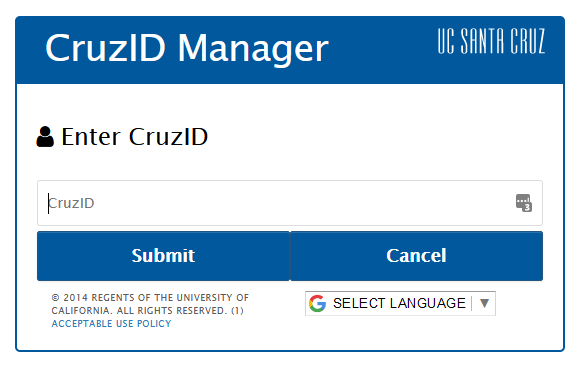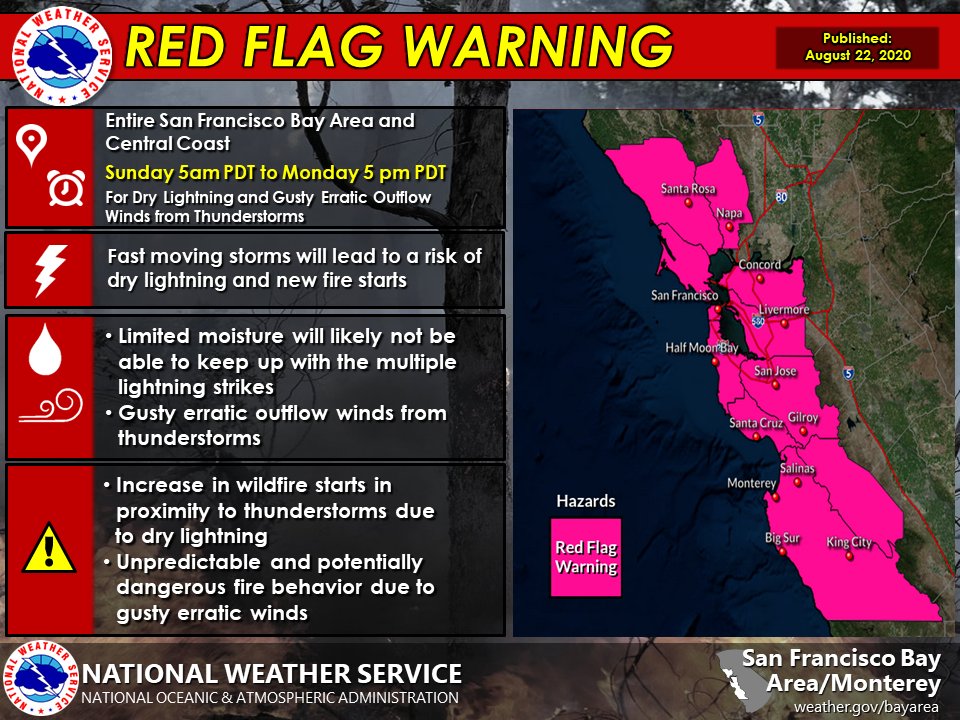Preparing for Wildfires
Although an ideal situation would find all prevention measures sufficient to prevent a wildfire, there is always a chance that one will ignite and force a response effort. The best way to navigate a wildfire situation is with preparation and advance notice.

Receive Alerts
All students are automatically enrolled in our emergency alert system, CruzAlert, at the time of their enrollment. However, it is crucial that your information is up to date. Anytime that your information changes, make sure to update your CruzAlert Profile by accessing your CruzID Manager.

The Santa Cruz Fire Department (SCFD) and the CalFire San Mateo-Santa Cruz Unit (CZU) both tie in their dispatch alerts and deployments to PulsePoint. PulsePoint is an application that allows anyone to see what participating agencies have been deployed to and what incidents are occurring around them. You can learn more about PulsePoint and download the Respond app to stay informed!

Santa Cruz and San Benito Counties also use a service called Reverse 9-1-1 to notify community members of emergency situations occurring within the area. The service is provided by OnSolve Code Red. You can create a managed account to receive alerts via SMS and use the Code Red app to customize alerts and details. The app allows you to set custom alert radius and opt in to specialized alerts to enhance your situational awareness while in the area!

One of the best resources to stay up-to-date with the latest information from CalFire itself is through their CZU Twitter handle. In addition to helpful tips, this twitter handle will include pertinent information about ongoing evacuation orders and the status of any wildfires within the operational area.

Finally, most phones are automatically registered with the Emergency Alert System (EAS). This system allows emergency services organizations to inform you when there are major emergencies nearby and when you should take action. Check your phone settings to verify that your emergency alerts are enabled.
Learn the Dangers
You may recognize the ‘Today’s Fire Danger’ sign that is installed at both entrances to the UCSC Main Campus. A variety of factors contribute to our overall assessment of fire danger. To learn more about how these dangers are determined and what each rating means, please see our Understanding the Fire Danger Sign page.

Red Flag Warnings
Another type of weather alert, called a Fire Weather Watch, is also issued by the National Weather Service. The primary difference between the two is that a Fire Weather Watch indicates that conditions likely can lead to wildfires, while a Red Flag Warning indicates that conditions are imminently dangerous for the development of wildfires. Red Flag Warnings convey greater concern, although precautions should also be taken when a Fire Weather Watch is issued.
Public Safety Power Shutoffs
- Severe Weather Forecasted: PG&E identifies that severe weather that could be conducive to wildfire is likely. Usually a few days to a week before a power shutoff.
- PSPS Outage Watch: PG&E announces that a shutoff is likely and notifies residents of when a shutoff is projected to occur and when they expect to resume power. Usually 1-2 days before a shutoff.
- PSPS Outage Warning: PG&E sends an alert to affected customers that a PSPS will occur and will give an estimated shutoff and restoration time. Usually a few hours before the shutoff.
- Power Shutoff: PG&E cuts the power to a vulnerable region during severe weather.
- Updates and Inspections: PG&E crews deploy to the affected area to check for any components of their infrastructure damaged by the severe weather.
- Power Restored: Within 24 hours of severe weather subsiding, PG&E restores power to the affected communities.
Understanding Evacuations
When a hazard presents sufficient danger to a community, alerts will be sent out to begin the process of evacuating a community. Alerts will generally use two terms to describe the action you need to take:
- Evacuation Warning - A hazard exists such that an evacuation may be necessary to protect life and property, as a result you should prepare to evacuate.
- Evacuation Order - An imminent danger exists to life and property and you must evacuate immediately.

Generally speaking, an evacuation warning will come before an evacuation order is issued. However, this is not universally true. Wildfires are sporadic and can change behavior rapidly. As a result, an evacuation order may be the first announcement issued.
The University of California system offers another mechanism to allow for a campus wide evacuation. The Chancellor may make a Declaration of Emergency. In such a case, the campus leadership has determined that an emergency of significant magnitude exists and provides campus safety officials the authority to mandate and enforce an evacuation. Any such declarations will be articulated through the CruzAlert system.
- See the CZU Lightning Declaration of Emergency from 2020.
- California Penal Code §409.5 and §830.2
Assembling an Emergency Supply Kit
Having supplies prepared long before a disaster provides confidence during uncertain situations and enables you to act safely and swiftly. Make sure that your emergency supply kit is placed in a safe, accessible area where you can grab it and go when an evacuation is needed.
You can follow our checklist below to make sure that your kit contains the essentials needed.
Emergency Supply Checklist
- Three day supply of non-perishable food and three gallons of water per person.
- Copies of Important documents (driver’s licence, student ID, employee ID, birth certificates, passports, etc.).
- An extra set of car keys, credit cards, cash or travelers checks.
- Cell phone and chargers.
- Flashlight and extra batteries.
- Battery-powered radio and extra batteries.
- First aid kit.
- Prescriptions or special medications (blood pressure medicine, insulin, epipen, etc.).
- Extra glasses or contact lenses/supplies.
- Map of the local area marked with at least two evacuation routes.
- Sanitation supplies (toothbrush, tooth paste, soap, toilet paper).
- Change of clothing.
- Pet food and water.
If you have more advance notice before an evacuation, you may consider packing the following items:
- Easily carried valuables.
- Family photos or other irreplaceable items.
- Personal computer information on portable storage devices.
- Chargers for cell phones, laptops, etc.
Returning to Campus
When the campus and surrounding communities are no longer facing an immediate threat of a wildfire, you may be notified that the evacuation order has been lifted. However, you should not return to the campus just yet. Before it is safe to resume normal operations and lodging, campus officials need to perform inspections and safety assessments.
Furthermore, the process of preparing the campus for a wildfire situation often means that essential resources including natural gas lines and electrical systems are deactivated. Preparing the campus for normal operations requires some time and there will be a notification sent out to all members of the campus community when it is safe to return.

